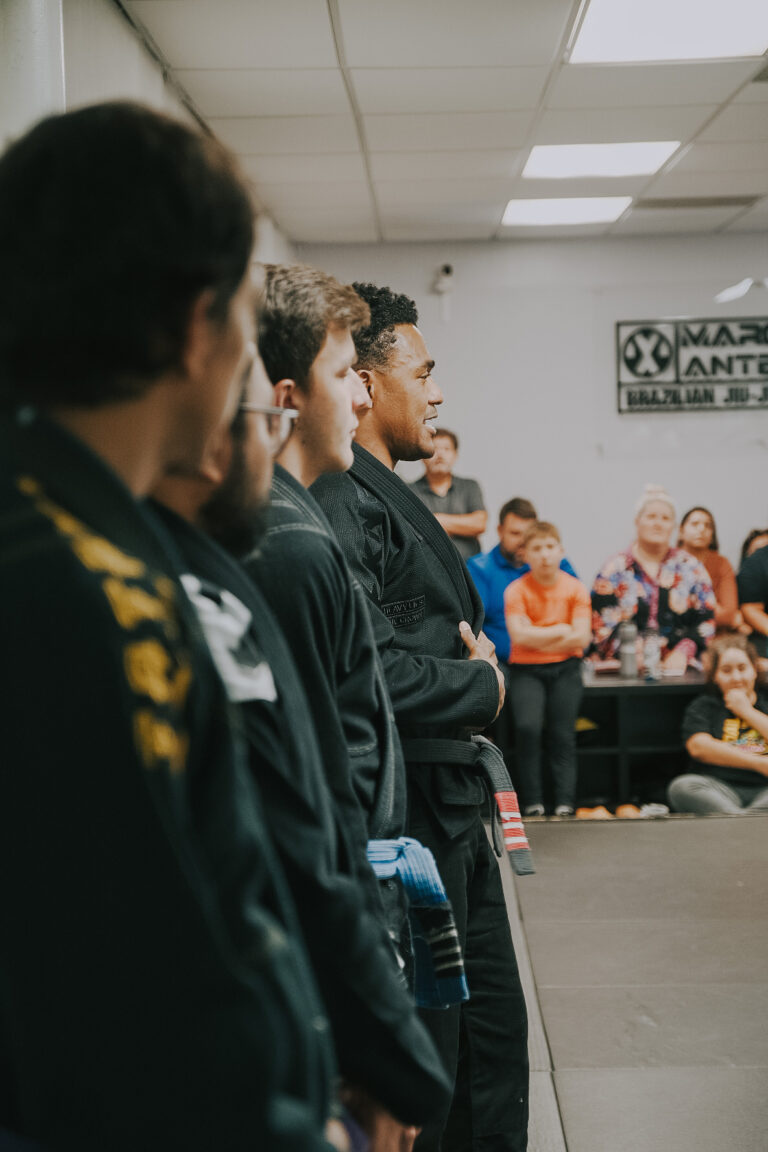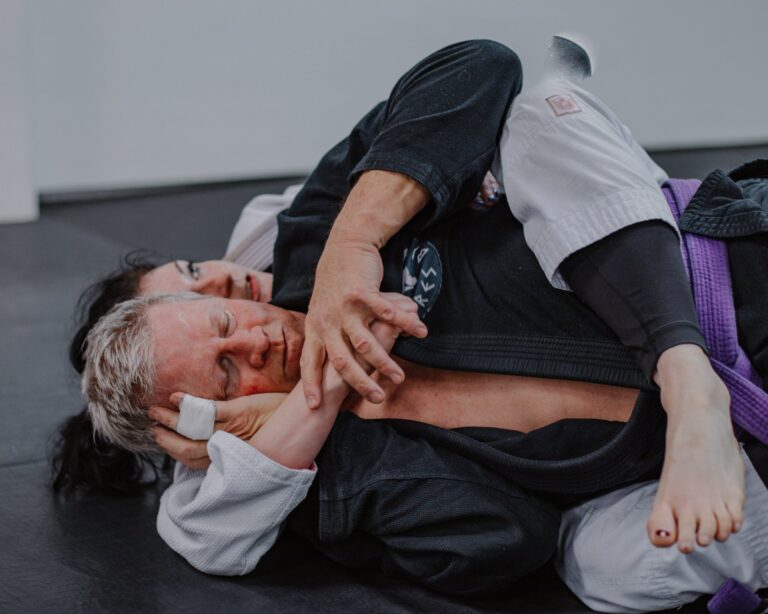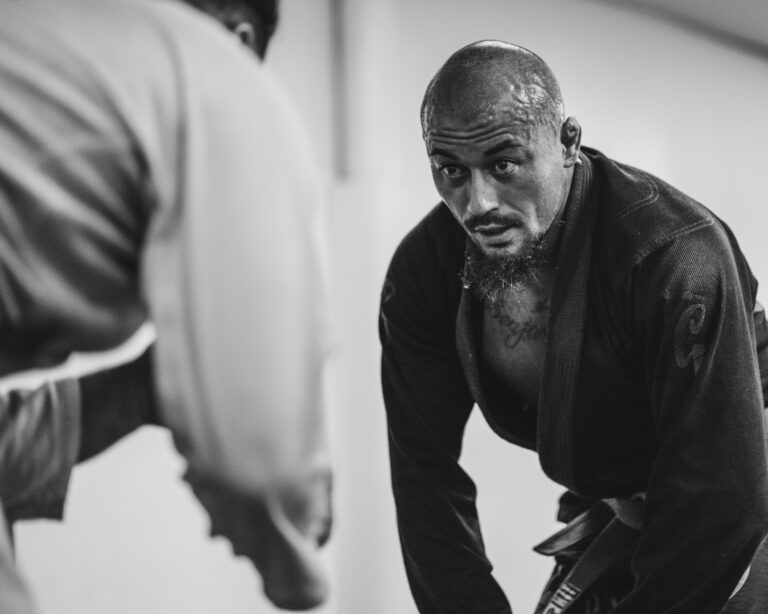The BJJ Beginner’s Guide: Essential Tips and Mat Etiquette for Your First Class in Irving, TX
Taking the first step onto the mat to start Brazilian Jiu-Jitsu (BJJ) can feel intimidating. Known as “the gentle art,” BJJ is one of the most effective forms of self-defense and a powerful tool for physical and mental fitness. However, like any martial art, it has traditions and unspoken rules that ensure a safe and respectful learning environment.
Jiu-Jitsu classes in Irving, TX
Part I: Preparing for Your First BJJ Class
Your first few classes are about surviving, listening, and observing. Preparation is key to making this experience positive and sustainable.
1. What to Wear (and What to Bring)
Proper attire is mandatory for hygiene and safety.
For Gi Classes: If you don’t own a Gi yet, the academy may have loaner Gis. If not, wear comfortable athletic clothes (sweatpants or leggings and a long-sleeve shirt) that cover your arms and legs.
For No-Gi Classes: Wear a rash guard (or close-fitting T-shirt) and athletic shorts or leggings. Avoid pockets, zippers, or loose fabric that could catch on fingers.
Hygiene Essentials: Always bring a water bottle. If you have long hair, tie it back securely. Bring sandals (flip-flops) to wear off the mat. This prevents outside dirt from contaminating the training area.
The Golden Rule: Fingernails and toenails must be trimmed short. Long nails can easily scratch a training partner during grappling.
2. The Beginner’s Mindset
More important than your physical fitness is your mental approach to learning BJJ.
Check Your Ego at the Door: As a beginner, you will be submitted and controlled—often by smaller, less physically strong partners. This is the nature of BJJ. View every tap as a learning opportunity, not a defeat. Humility is your strongest defense.
Focus on Consistency, Not Intensity: Don’t try to win every roll. Your goal for the first six months is simply to show up consistently. Two to three times a week is far better than one intensely hard day followed by a week off due to soreness.
Tap Early, Tap Often: Tapping (or verbally saying “Tap!”) is the sign of a smart student. It protects you from injury and allows you to learn from the submission without fear. Your training partners at the MA BJJ Academy rely on you to tap before you get hurt.
Ask Questions (at the right time): If you don’t understand a detail, wait until the instructor is finished explaining the technique. Then, politely raise your hand or approach the instructor or a higher belt when the group is drilling.
Part II: Mastering BJJ Mat Etiquette
Mat etiquette is a set of common-sense rules based on safety, hygiene, and respect. Following these rules shows respect for your instructors, your teammates, and the martial art itself.
1. Hygiene Rules (Non-Negotiable)
Hygiene is paramount in BJJ due to the close physical contact.
The Clean Uniform: Your Gi or No-Gi gear must be washed after every single use. Bacteria and funguses thrive in sweaty gear. Never re-wear a dirty uniform.
Personal Cleanliness: Shower before coming to class if possible. Always wear deodorant. Ensure your feet, hands, and body are clean.
Wounds and Illness: If you have any open cuts, scrapes, or skin irritations (even minor ones), they must be completely covered with bandages and athletic tape. If you are sick (even a minor cold), stay home. BJJ is too close-contact to risk spreading illness.
Footwear Off the Mat: Always wear sandals or flip-flops when walking off the mat (to the bathroom, water fountain, or front door). Bare feet only belong on the clean mat.
2. Respect for the Instructor and Class Structure
The instructor is the highest authority in the room, and respect for their time and knowledge is expected.
Punctuality: Arrive on time for class. If you are late, wait at the edge of the mat until the instructor acknowledges you and gives you permission to join. Never interrupt a demonstration.
Attention During Instruction: When the instructor is talking or demonstrating, sit still and watch. Do not talk to your partners, and avoid distracting movements. Stand quickly when instructed.
Respect the Mat Space: Never walk across the mat between two people who are talking or sparring. Walk around the active area.
Asking to Spar (Roll): When it is time to spar, it is polite to ask higher belts (purple, brown, or black) if they are willing to roll. Never argue or complain about who you roll with.
3. Safety and Partner Awareness
Safety is a shared responsibility among everyone training in the BJJ class in Irving.
Control Your Strength: As a beginner, focus on technique, not muscle. Use only enough force to execute the move, especially when rolling with lighter or smaller partners.
Be Aware of Your Surroundings: During sparring, pay attention to other groups. If you roll close to another pair or the edge of the mat, tap hands with your partner, pause, and move back to the center or a safe area.
The Belt System: In many academies, it is traditional to ask permission from a higher belt (especially purple belts and above) before engaging them in a roll. Always thank your partner after the roll, regardless of the outcome.
No Shoes on the Mat: This rule is sacrosanct. The mats must be kept pristine for safety and hygiene.
Part III: The Early Journey and Long-Term Success
BJJ is a journey of self-improvement. By embracing the disciplined environment of the martial art, you gain lifelong benefits that extend beyond self-defense to your professional and personal life in the Dallas metroplex.
The Role of the Higher Belts
Higher belts at the MA BJJ Academy are valuable resources. They have navigated the same difficult beginner phase you are going through.
Listen to Advice: If a higher belt offers advice during a roll, pay attention. They are trying to help you understand where your technique failed. Don’t take it as criticism; take it as free, personalized coaching.
Rolling Protocol: When rolling with higher belts, treat the experience as a lesson. Try to understand what they are setting up and how they are controlling you. Don’t resort to frantic strength; try to use the technical principles you learned that day.

Consistency is Your Superpower
The single biggest factor determining success in BJJ training is showing up.
Set Realistic Goals: Commit to a small, achievable number of classes per week. It is better to go twice a week for two years than five times a week for two months and burn out.
It Gets Easier: The physical aches and mental fatigue of the first month will pass. Your body will adapt, and the techniques will slowly begin to click. Don’t quit before the art begins to make sense—usually around the three to six-month mark.
Discover MA BJJ Academy
If you are ready to begin your journey, we invite you to experience the disciplined and welcoming environment at the MA BJJ Academy in Irving near Dallas. We offer dedicated beginner programs designed to teach you the fundamentals safely and effectively.
Visit our website today to find our schedule and sign up for your first class. We look forward to seeing you on the mat!







